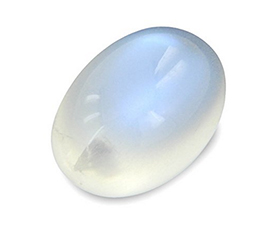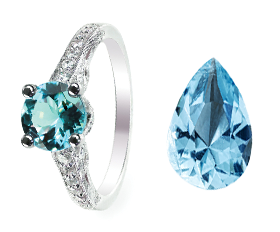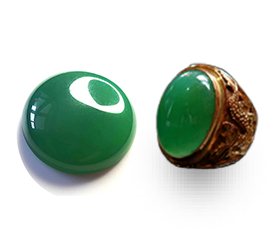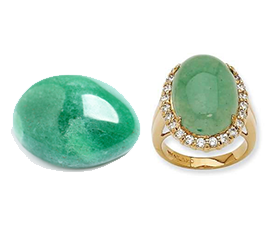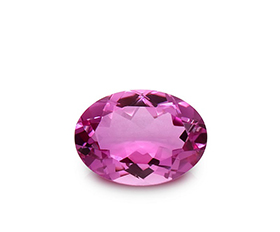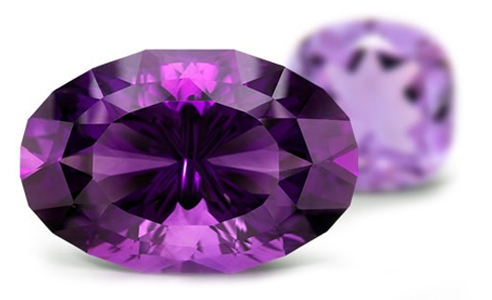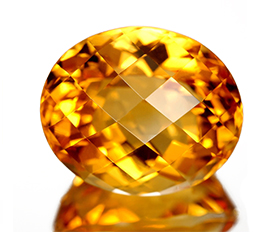Education About Agate
Agate is the name given to numerous varieties of banded Chalcedony, a mineral of the Quartz family. Its name comes from the Achetes River in Sicily, where Agates were first found. Usually banded in layers, or stripes, some varieties have "eye" markings, or specks of colour, some have fossilised inclusions, and others are solid. Called the earth rainbow, the concentric bands of Agate form in nearly every colour the earth can produce, including a colourless form.
It is a translucent variety of microcrystalline quartz. It is used as a semiprecious stone when it is of desirable quality and colour. Agate generally forms by the deposition of silica from groundwater in the cavities of igneous rocks. The agate deposits in concentric layers around the walls of the cavity, or in horizontal layers building up from the bottom of the cavity. These structures produce the banded patterns that are characteristic of many agates.
History
Historically, Agate has been discovered with the artefacts of Neolithic people, and was used as healing amulets and ornamentation dating back to Babylon. Its medicinal uses continued through the ancient Greek and Egyptian civilisations, and spread throughout Africa and the Middle East into Russia. Agate sparked a world renowned stone-cutting and polishing industry in Germany that flourished from the 15th to the 19th century, and exists today.
Metaphysically, Agate has a lower intensity and vibrates to a slower frequency than other stones, but is highly regarded as a stabilising and strengthening influence. The layered bands of microscopic quartz in Agate may appear delicate, they are actually very strong. Agate is excellent for balancing emotional, physical and intellectual energy, and in harmonising yin and yang, the positive and negative forces of the universe.
Agate occurs in a wide range of colours, which include brown, white, red, Gray, pink, black, and yellow. The colours are caused by impurities and occur as alternating bands within the agate. The different colours were produced as groundwater of different compositions seeped into the cavity. The banding within a cavity is a record of water chemistry change. This banding gives many agates the interesting colours and patterns that make it a popular gemstone.
Types of Agates
The world of agates is a fascinating and ever evolving places. There are hundreds, if not thousands of types of agates. They are found around the world. They bring a wonder and magic to the planet with their swirls of colour bands.
Blue Lace Agate, Crazy Lace Agate, Dendritic Agate, Fire Agate, Laguna Agate and Moss Agate.
Agate Gemstone
Agates have been used as gemstones for thousands of years. They were some of the earliest stones fashioned by people. Today they are cut into cabochons, beads, small sculptures, and functional objects such as paperweights and bookends. Agate cabochons are popular and used in rings, earrings, pendants, and other jewellery objects. Agate beads are commonly made into necklaces and earrings. Some have been used as marbles.
Tumbled Agate
Agate is the most popular rough for producing tumbled stones. It is generally inexpensive and can be tumbled with good results by beginners. It has a hardness of seven and can be loaded into a rock tumbler with jasper and any of the quartz varieties.
More About Agate
Most agate has unimpressive colours and patterns. However, agate is a porous material that readily accepts dye. Most of the spectacularly coloured agates sold in the gemstone trade have been dyed. Rarely, the colour patterns of an agate form interesting landscape scenes. These are sought after by collectors.
Moss agate
Moss agate contains green filament-like inclusions, giving it the superficial appearance of moss or blue cheese. There is also tree agate which is similar to moss agate except it is solid white with green filaments whereas moss agate usually has a transparent background, so the "moss" appears in 3D. It is not a true form of agate, as it lacks agate's defining feature of concentric banding.
Agate Healing properties
Metaphysically, Agate has a lower intensity and vibrates to a slower frequency than other stones, but is highly regarded as a stabilizing and strengthening influence. The layered bands of microscopic quartz in Agate may appear delicate, they are actually very strong. Agate is excellent for balancing emotional, physical and intellectual energy, and in harmonizing yin and yang, the positive and negative forces of the universe.
Blue lace agate
Blue Lace Agate has a soft, soothing elegance; like sky-blue waters released from winter's grasp. Its graceful, circular design has a stimulating, positive effect on emotions and attitude. It is not a stone of protection, but rather of encouragement and support. Its circular flowing energy calms, uplifts and elevates.
Crazy lase agate
Crazy Lace Agate is called the Laughter Stone, or "Happy Lace." It is associated with sunny Mexican fiestas and dancing, and brings joy to those who wear it. It is not a stone of protection, but of support and encouragement, elevating thoughts and promoting optimism. Its graceful design, in random lacy patterns, creates a circular flow of energy, stimulating for the mind and attitude.
Dendritic agate
Dendritic Agate is known as the Stone of Plentitude. It brings abundance and fullness to all areas of life, from business to agricultural endeavors. It was associated with the ancient Greek dryads, woodland and tree spirits, and was buried in the fields at the time of sowing to insure a good harvest.
Fire agate
Fire Agate, known as the spiritual flame of absolute perfection, carries a great mystery locked inside its deep brown crystal. You need only touch the stone and fiery embers ignite. Peer into its depths and flames leap within its chambers. Study it closely and it will almost show you its secrets.
Laguna agate
Laguna Agate is the most highly praised banded agate in the world. It is known for its extremely tight banding and vibrant shades of red and scarlet. Laguna Agate is found in an area covering roughly four square miles in a remote mountain range in the state of Chihuahua, Mexico.
Moss agate
Throughout history and all cultures, Moss Agate has been known as the crystal of gardeners and agriculture. It was considered a miraculous healing stone for tribal priests of the past, giving them power to interact with our human organic system, and was used as a talisman to make warriors strong and victorious.


